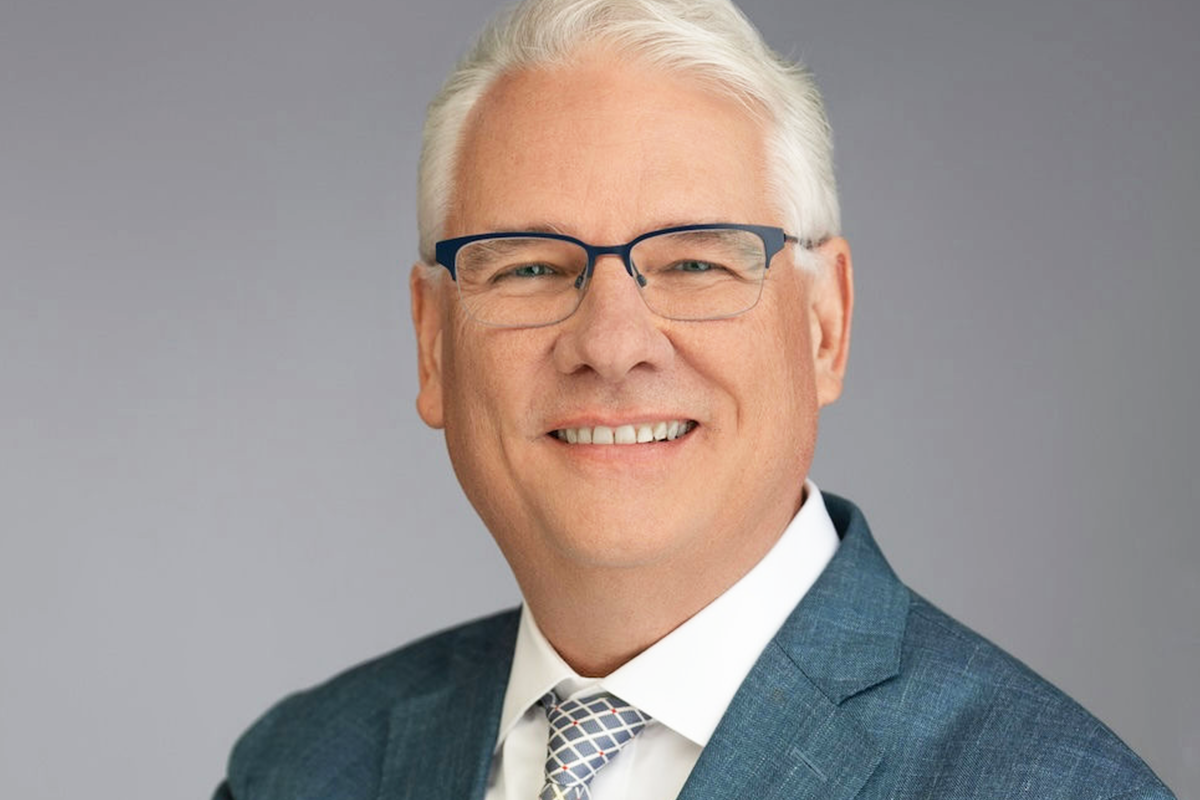As the Society for Neuroscience’s annual meeting kicks off this weekend in San Diego, some researchers are looking for the organization—and its new executive director, who comes from outside of the field—to improve outreach efforts amid a funding crisis.
SfN announced on 4 November that Kevin B. Marvel, former chief executive officer of the American Astronomical Society, will be its next executive director, effective 16 March 2026. He will replace Marty Saggese, who has held the position since 2002.
“Scientific research in general is under attack, and neuroscientists are directly in the crosshairs, along with the whole NIH. And I think that SfN needs to help reverse that,” says Joshua Jacobs, professor of neurology at the University of Chicago. “By far the biggest priority of the Society for Neuroscience should be to do things that can help us preserve NIH funding.”
Kathie Olsen, former deputy director and chief operating officer of the National Science Foundation and founder of the science advocacy firm KLO International, says SfN needs to educate the public “on the importance of neuroscience” and help explain “the vital role fundamental research has.”
The organization is also facing issues around membership and attendance for its annual meeting. Given these high stakes, the choice of Marvel—an unknown to many neuroscientists and lacking neuroscience expertise—caught some by surprise.
“It doesn’t make any sense to me,” Jacobs says. “It’s absolutely wild.”
I
n May, SfN announced that Saggese would be stepping down on 31 January 2026, and that it would begin a search for his replacement. Marvel will be just the third executive director in the organization’s 56-year history. Incoming SfN president Nicholas Spitzer told The Transmitter that the search committee “felt Dr. Marvel was a natural fit for this role, bringing both experience and enthusiasm for SfN’s mission,” but SfN declined to answer specific questions or make Marvel available for an interview.Marvel became chief executive officer of the American Astronomical Society in 2006. A release from the society notes that Marvel increased the staff from 13 to 42 during his tenure, established several scientific journals, and transitioned the society’s journals to open access. (The American Astronomical Society declined to comment.) Revenues rose from $10.1 million in 2006, Marvel’s first full year as chief executive, to $19.2 million in 2023, the last year for which information has been made publicly available. Richard Fienberg, former press officer of the society, says that under Marvel, the organization expanded its outreach efforts to astronomers and ran several campaigns to educate the public about total solar eclipses.
Though SfN’s journals have accounted for about 25 percent of its revenue over the past decade, it gets just over half of its funding from its annual meeting, which draws neuroscientists from all over the world. SfN reported a $3 million profit for fiscal year 2025, but its membership has had a “modest” decrease, according to its 2025 annual report, and attendance for the annual meeting has not returned to pre-pandemic levels. Last year’s meeting drew 22,359 people, about 5,000 fewer people than in 2019. Moses Chao, professor of cell biology, neuroscience and psychiatry at NYU Langone Health Medical Center and former president of SfN, says that he expects attendance to fall below 20,000 people this year.
That would coincide with a drop in abstract submissions. SfN received half as many submissions during its initial call this year as it has in recent years, says Carol Ann Mason, professor of pathology and cell biology at Columbia University and former SfN president.
“The community really lost a lot during the pandemic,” says Joshua Sanes, professor emeritus of molecular and cellular biology at Harvard University and contributing editor for The Transmitter. “Things have not come back to a position where people interact the way they used to.”
Y
et the biggest issue SfN must confront is the federal policy changes that have roiled the field in 2025, says Lucina Uddin, professor of psychiatry and biobehavioral sciences at the University of California, Los Angeles and contributing editor for The Transmitter. Neuroscience is facing “an actual funding crisis,” she says, due to disruptions from policy changes, grant cancellations and funding cuts. The National Institutes of Health has awarded fewer new neuroscience-related grants in 2025 than in any other year over the past decade, and its overall budget has been cut.Grants are used to fund travel, and SfN’s membership may dwindle further as neuroscientists who lack funding leave the field, Uddin points out. The organization will need to “create or promote” new funding mechanisms to combat this, she says, and SfN is “probably well positioned” to do that.
Mason says that “terrible things are happening at universities,” particularly her home institution of Columbia University, where “all of our grants were canceled.” Though many were reinstated, she says, grants with scores she normally would have expected to be funded weren’t awarded this year.
Though SfN has historically been a strong advocate for basic research, the organization has been “very conservative” about addressing government policies that could negatively affect researchers, Chao says. “They could do a little more in promoting what they really think about what’s going on,” he says.
Olsen says that the head of SfN should be a good leader but doesn’t “have to be a neuroscientist.”
Fienberg points out that Marvel’s experience may be helpful for navigating uncertainty at the federal level. “He is a policy person—that’s how he started at AAS,” Fienberg says. “It wasn’t about the astronomy, per se. It was about smoothly running the society.”
Sanes says he hopes SfN strengthens its public outreach, though it hasn’t “done a great job of it in the past,” and that it may want to partner with other organizations to do so. He admits he knows “nothing about” Marvel, though he pointed to Marvel’s long experience running a scientific society as a positive. Still, that gives him pause, he says, because it could mean Marvel is winding down his career. “Is he long term? I’m not sure.”
Mason also says SfN needs to focus on outreach, and, like Sanes, she knows little about Marvel. She had expected the hire might be someone Saggese had mentored, but from what she has gathered, the decision “sounds like a pretty good one.”
Saggese had no direct experience with neuroscience before taking the executive director position, though he was previously deputy executive director at a global health organization. Marvel will be shadowing Saggese for the week of the conference, Mason says. She expects to meet him at a luncheon SfN is hosting for past presidents on Monday, if not earlier. “After that, I’ll know more,” she says.





